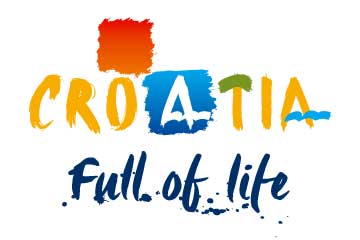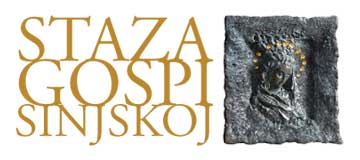5th Carnival Festival Of The Cetina Region
For a long time, Sinj and the Cetina region have been drawing attention with their unique and interesting events, but the carnival festival is surely a class of its own. This year, on March 5th, it will be its fifth jubilee organized by the city of Sinj, Sinj Tourist Board and co-organized by the Cultural Arts Center Sinj.
Numerous carnival groups have the opportunity to present themselves to the general public – the result is a lively, cheerful and noisy procession which, under the multitude of colors, hides the long tradition maintained by carefully and strictly established rules. The masked carnival groups are the best promoters of the carnival customs in our region and after the Three Kings’ Day they head towards the villages and hamlets. Their value is affirmed by the fact that they are included on the Intangible Cultural Heritage list of the Republic of Croatia.
In the villages of Gljev, Han, Obrovac Sinjski Bajagić and Gala, carnival pageants are a unique and original way of depicting ancient customs interwoven with the sounds of the carnival pageant bells and other accompanying rituals. In the municipality of Otok each hamlet has its own masked group (Jelašce, Priblaće, Živinice, Gala, Ruda, Udovičići, and on occasion the groups of Glavičica-Priblaće, Strana with the groups from Ovrlja and Korita), whereas in the municipality of Trilj the carnival groups go to the villages of Grab, Jabuka, Košute, Vedrine, Vrpolje, Čačvina and Velić. The arrangement of the carnival procession is based on traditional rules, not subject to any changes and only men take part in it.
At the head of the pageant is a white carnival pageant group with the barjo and a carnival wedding procession followed by the komedija and a black carnival pageant group. The wedding procession, symbolic of the end of winter and the arrival of spring, used to be led by the first did (an old man), and nowadays it is led by the barjo (standard-bearer). A pregnant, mannish bride accompanied by the diver (bridesman) searches for the bridegroom which is the main task of the pageant itself. There are also jenge (married women) and the jengije (maidens) as well as other guests – wedding characters wearing formal clothes (folk costumes). The Turk commands the carnival pageant groups making sure that the white and the black ones are never in the same place at the same time. The characters of the Turk and the bula (Turkish for aunt) are associated with the long period of the Ottoman rule in this area. Without mincing their words, the carnival pageant group Komedije criticizes the current social and political issues while following the carnival wedding procession. The black wedding procession is led by the baba and the did (an old woman and an old man) who are associated with the fertility cult. By simulating an intercourse, they are invoking a better and more plentiful annual crop, yet another indispensable ritual element. There are also žalovice, professional widow-mourners who wail comic and funny slogans.
The most interesting and the most impressive part of the procession are didi wearing sheep fleeces, up to 1.5 meters in height, on their heads and bells around their waists. Didi are dressed in old shabby clothes with colorful fringes sewn on them. They symbolize the ritual age-long battle of good spirits with winter, chasing it away with noise and with jumping. With the loud ringing of the bells they remove the curses from the livestock, which, along with fertility and arrival of the spring, attests to the main concerns of our ancestors.
On February 16th and 17th, Didi s Kamešnice will carry our customs and rich tradition beyond the country boarders – they will be guests of the 24th “Su Carrasegare Antigu Samughesu” carnival in Samugheo, Oristano province in Sardinia. This important visit is the result of seven years of close collaboration between The Alka Knights Society from Sinj and the representatives of the Sa Sartiglia Foundation from Oristano who are happy to pay each other visits during the Alka festivities and Sartiglia, one of the last equestrian carnival competitions in the Mediterranean. This opportunity was realized with the valuable support of Don Josip Dukić and it is the basis for further cultural exchange between Oristano and Samughea on the one side and Sinj and Gljev on the other, with the goal of more extensive promotion of these unique manifestations. Along with numerous and various local carnival groups, groups from Molise and Basilicata will also take part in the procession.
An exceptionally valuable publication "Didi from Kamešnice" was presented on January 31st in Alka Knights Court. Issued by the Croatian Photographic Union – young people for young people – a visually appealing publication is the result of a series of photography workshops for children and adolescents held from 2014 to 2018 in cooperation with the Didi s Kamešnice association. With the promotion of the publication, photographs and carnival masks done by the pupils of the elementary school Ivan Mažuranić from Obrovac Sinjski, have also been on display. The main objective – to introduce children to the culture and customs – has been accomplished in its entirety. Cetina Region heritage is enriched and passed from one generation to the next.
It is also worth mentioning the Bajagići carnival group visiting the 25th (February 16th) carnival event, bušari of Đakovo, the largest carnival of eastern Croatia which revives the carnival customs, songs, dances and craziness on the streets of Đakovo.
On February 16th, the 24th „Su Carrasegare Antigu Samughesu” carnival will host our Didi s Kamešnice from Gljev. You can watch this live on .facebook.com/Sardegnalive/










